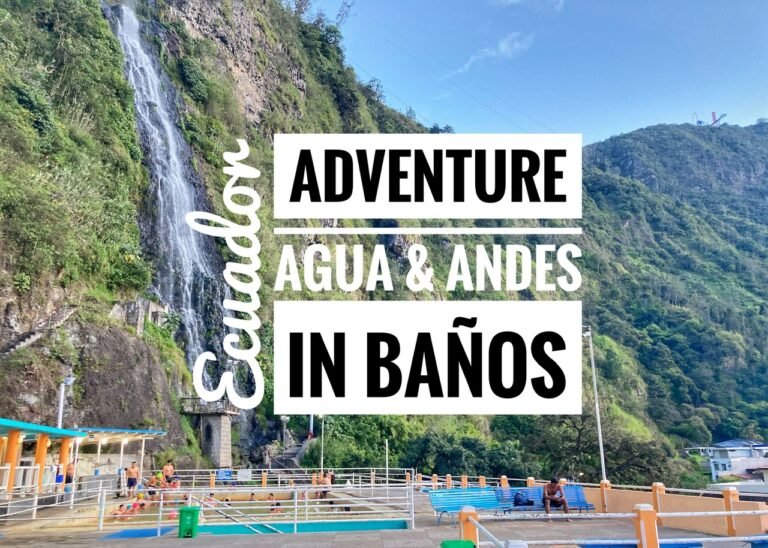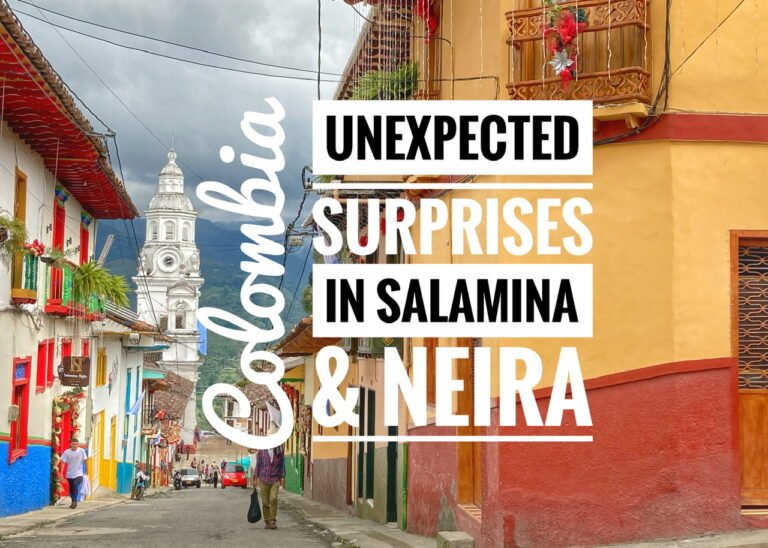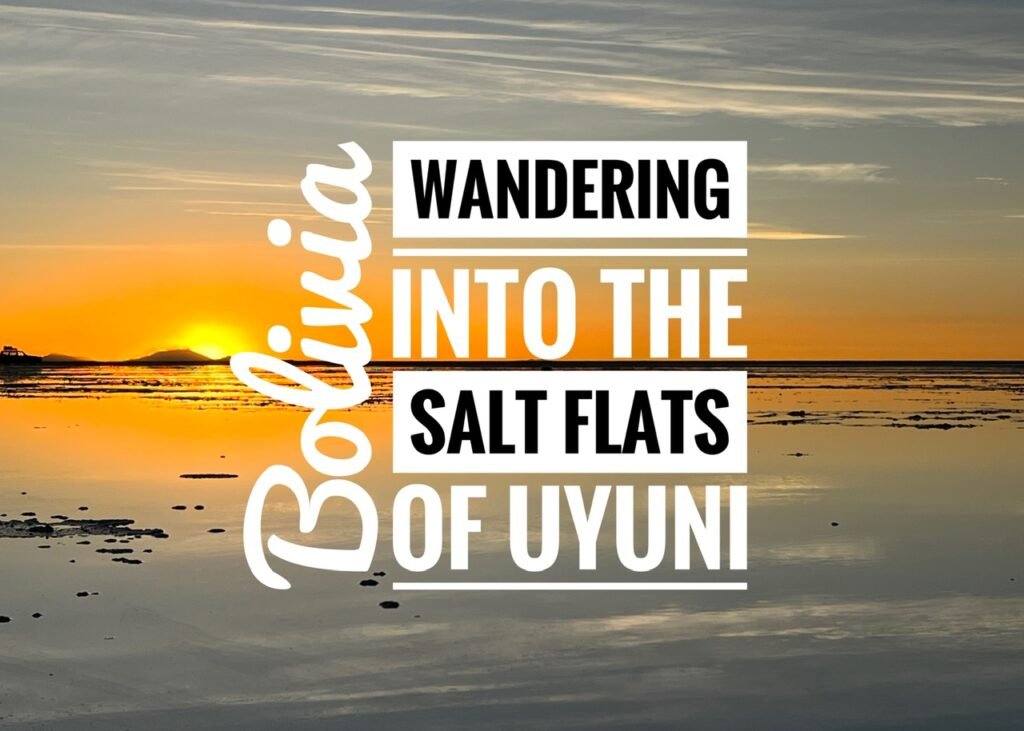
Salar de Uyuni, the largest salt flat on earth, is so vast that its 10,582 kilometers of barren, salty crust can be reflected from space. Despite being surrounded by Andes, it’s also the flattest place on earth and sits at 3,660 meters (12,000 feet) above sea level. The grand white expanse was created between 30,000 and 42,000 years ago as the evaporated legacy from dozens of prehistoric lakes.
Over the past few years, thanks in part to a social media explosion of forced perspective shots, many travelers fantasize of reaching the middle of the salt flat where there is nothing but a 360-degree view of emptiness. It’s simply a surreal stark white blanket that plays tricks on your eyes because you feel it should be cold…or slick…and instead, all you’re encompassed with is the fierce sun rays, the powerful reflection, and some of the bluest skies of your life.
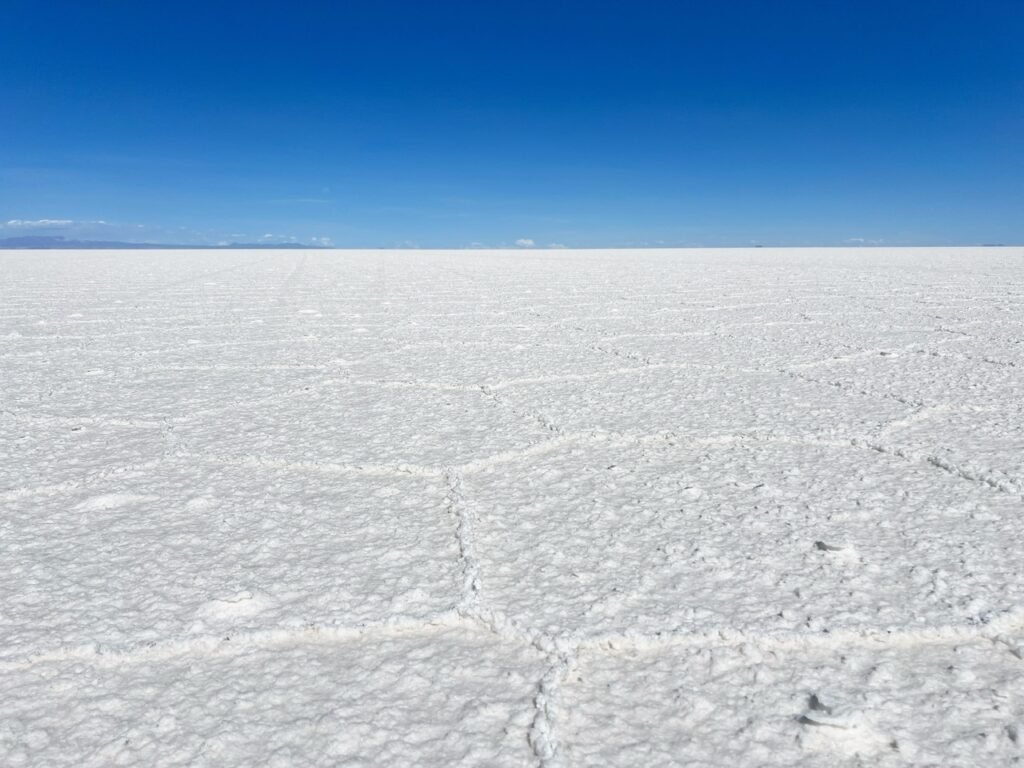
If you didn’t know better, you could easily be on the Alaskan tundra.

At the Maceta las Banderas, one will spot several colourful flags hanging from a series of poles. At first we thought the US flag wasn’t there simply because of the rift between the two countries. But in fact, it’s the country flags of the visitors who have visited the salt flat. So, if you’re from the States and heading to Uyuni, make sure to bring a flag!
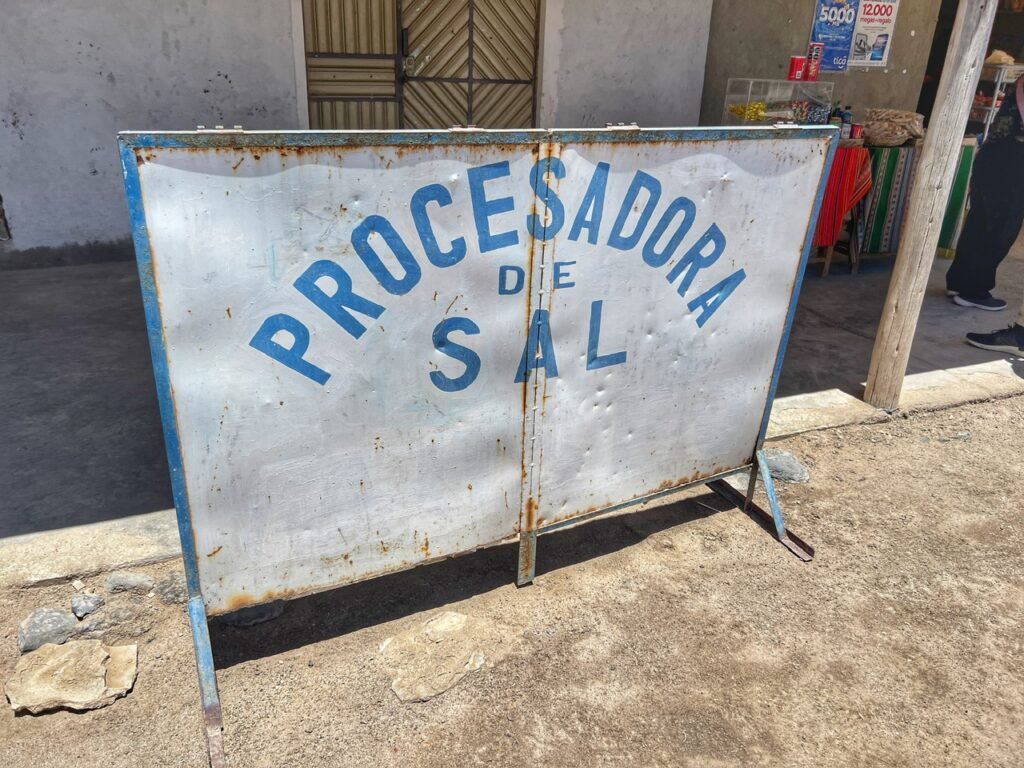

We also got to see one of the salt “factories” where they process the salt. All the salt is either ground up for human or livestock consumption, or used to make building materials.
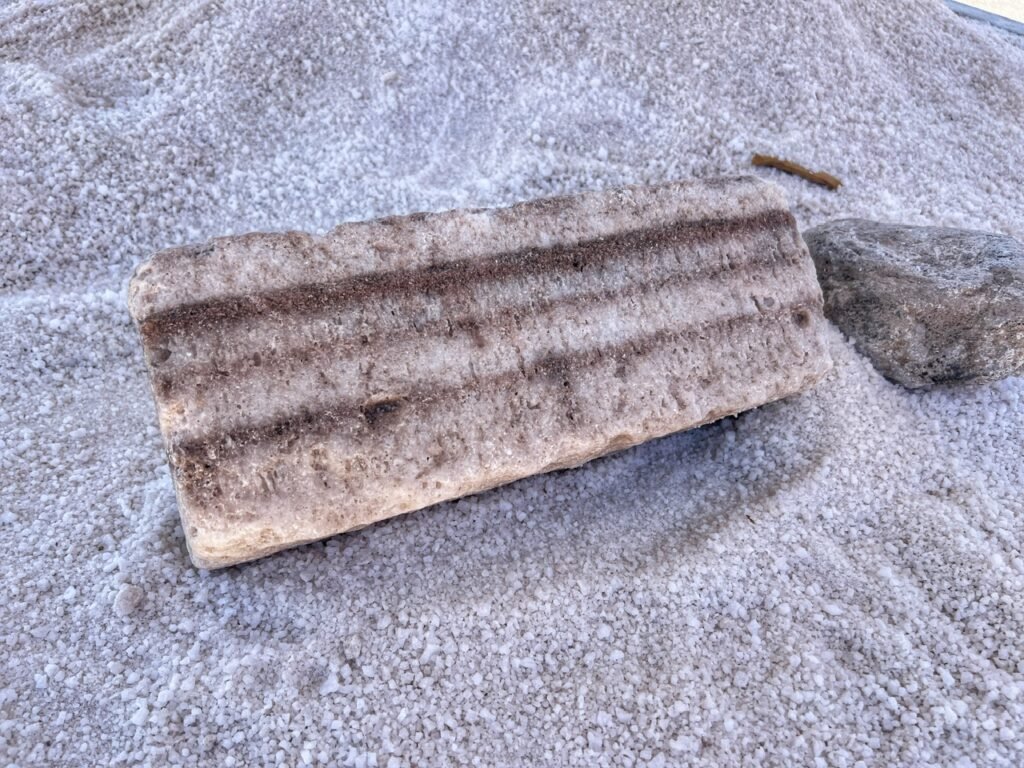


In this salt brick, used in construction, you can see layers. Each layer represents a season: summer or winter aka sun or rain. We then went into the store where we were invited to taste and/or purchase the salt. Since spices are something we always carry in our bag, we were happy to be able to purchase a souvenir for about $1. This salt llama, however, didn’t make the cut.
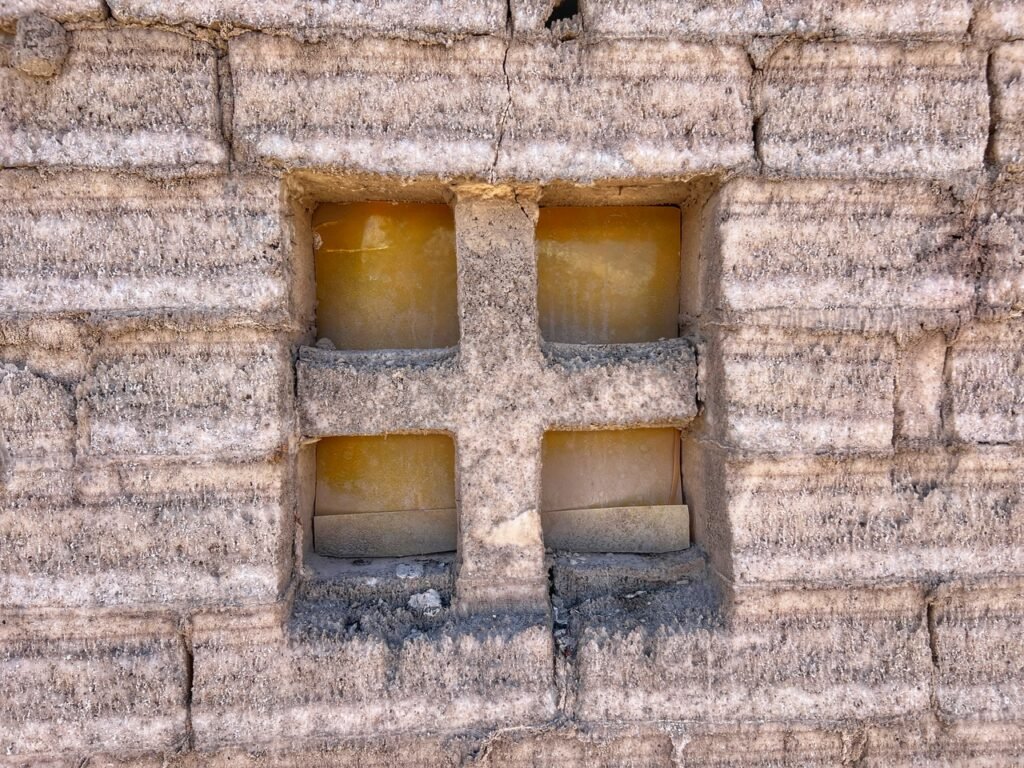
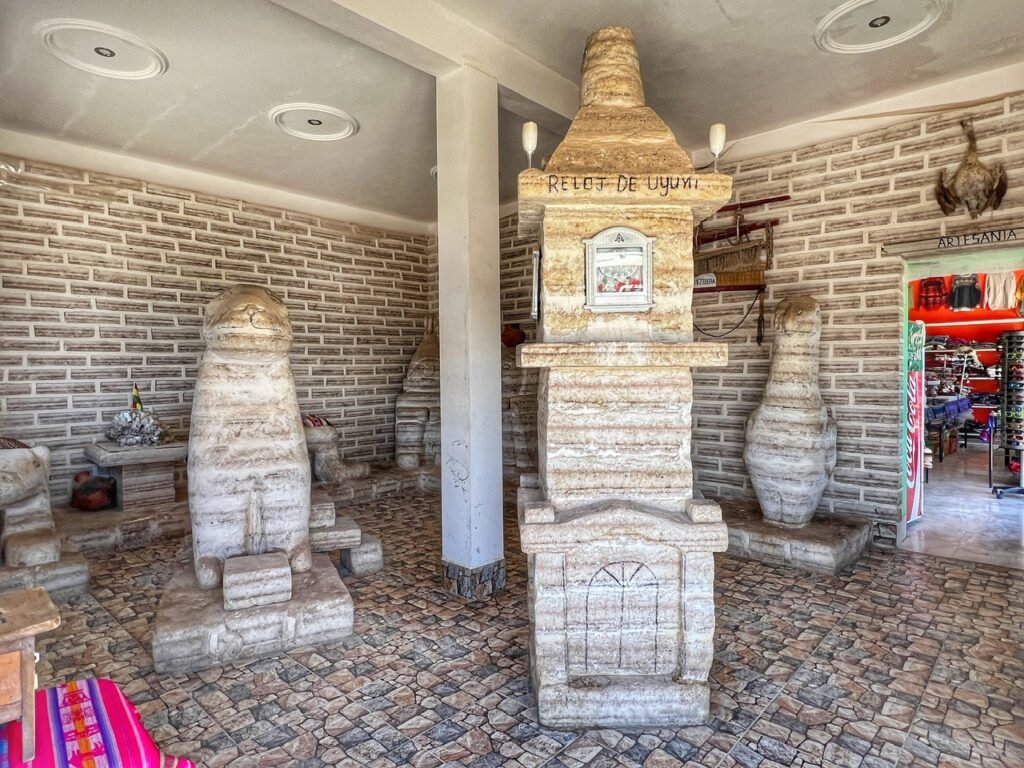
Outside we could see more of the salt construction, including the more intricate details of the windows. And the salt “museum”
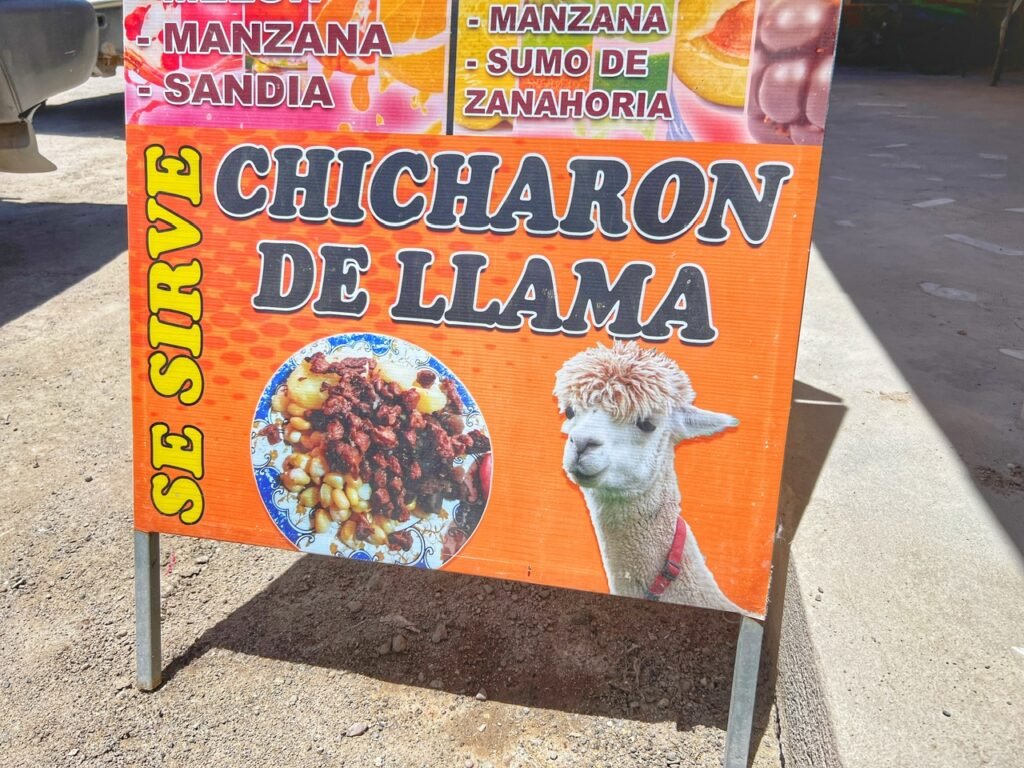
Another adorable llama with a mop of hair being served for lunch. Really? Does the cute photo actually sell the chicharrón? 😢

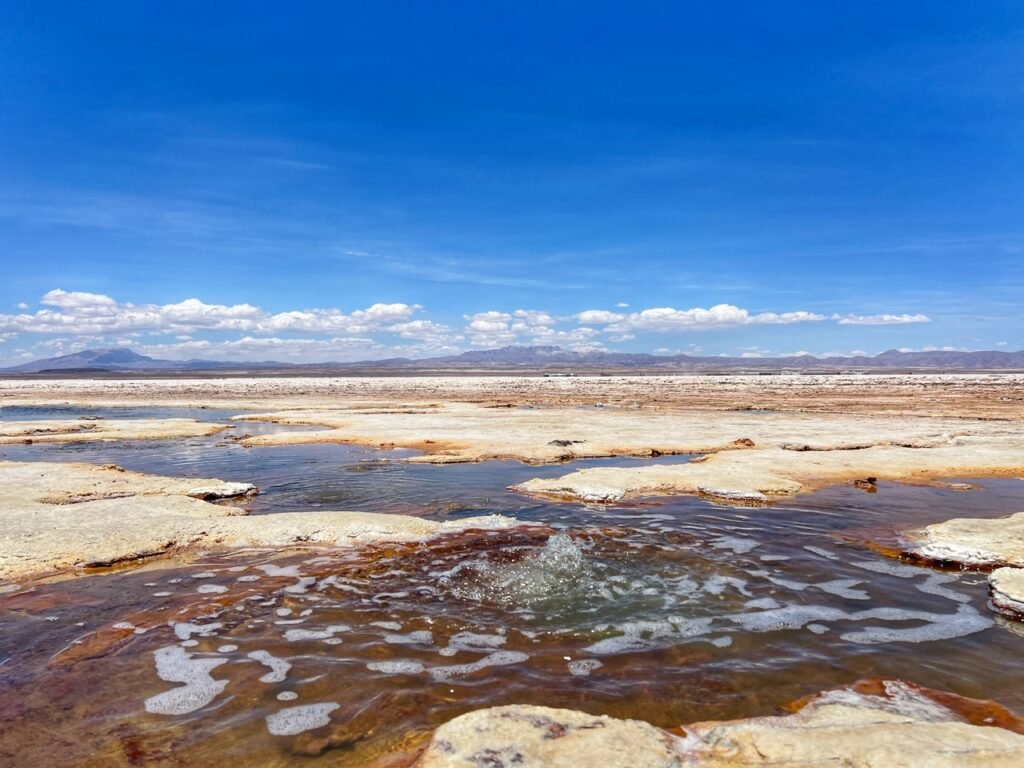
From here, we headed out onto the salt flat. At our next stop, we saw these bizarrely bubbling cold springs in the middle of the Salar. These “Ojos de Aguas” (Water eyes) are round holes where water wells up under the salt crust. This happens because during the rainy season, rainwater covers part or all of the Salar. After the rain, solar radiation and the wind dry the surface and a pure white crust is formed. Yet, beneath this surface, the salt is still wet. As the surface crust cracks, the brine moves up and the salt crystallises as it dries up, forming polygons on the surface.



More photos in the Ojos de Aguas. It’s some of the most otherworldly landscape we’ve seen. These white splotches were surprisingly soft and liquidy while the brown around was solid.


Welcome to another life, when dinosaurs ruled the world!

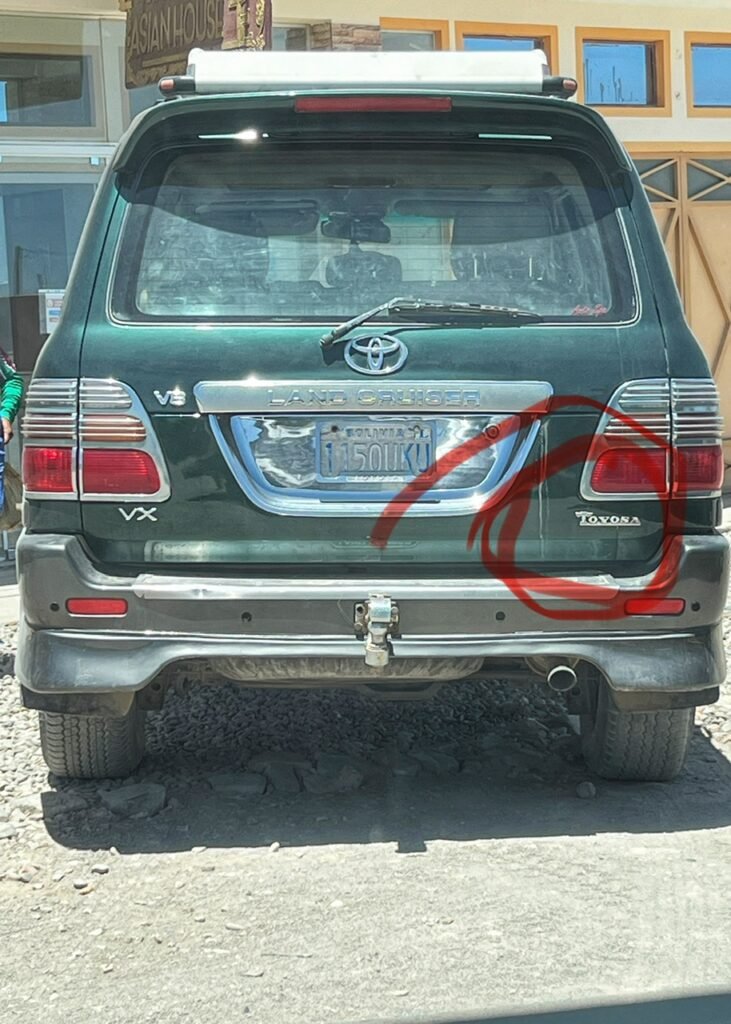
Throughout the day, we’d continue to see the same groups of tourists, all in a sea of Land Cruisers which take severe beatings day after day on this terrain. I wonder what a Japanese car manufacturer could possibly know about traversing a crusty salty field? Oh…never mind!! 🤣

When it wasn’t a Land Cruiser, we also encountered these extreme all-terrain over landers. Two from Germany and one from Paraguay. From a German one, we were incredibly disheartened to see black smoke spitting from the tail pipe snotting all over the white carpet. Seriously, German guy?! You know better!! 😡

Arriving for lunch at a salt hotel. Yes, there are literally entire hotels made of salt on the salar!

It’s not all flat! These kinda remind you of the snow sludge piles in US parking lots after the prettiness of a good snowstorm has passed.

The front of the hotel



Tables made of salt…and pretty ladies made of salt too! The rooms of the hotel line the hallways.

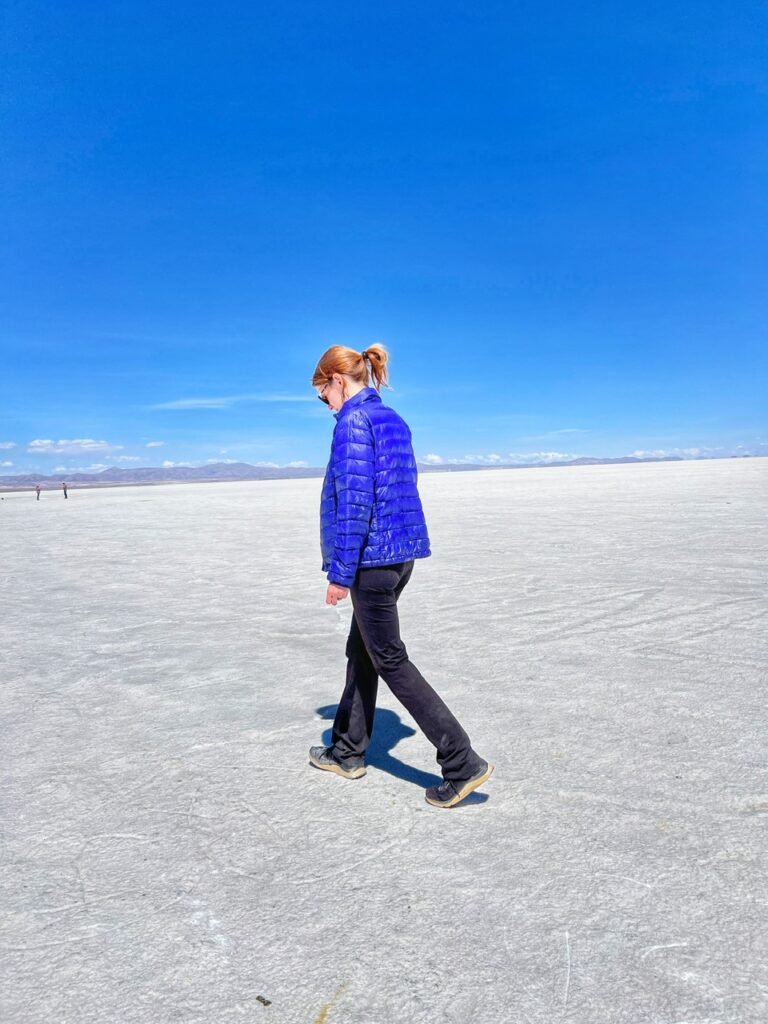
And it was here, the feeling of complete isolation begins.

The Dakar Rally is an annual event where competitors drive across South America in various motor vehicles. The Dakar monument, made of salt blocks, was erected about five kilometres into the Salar.

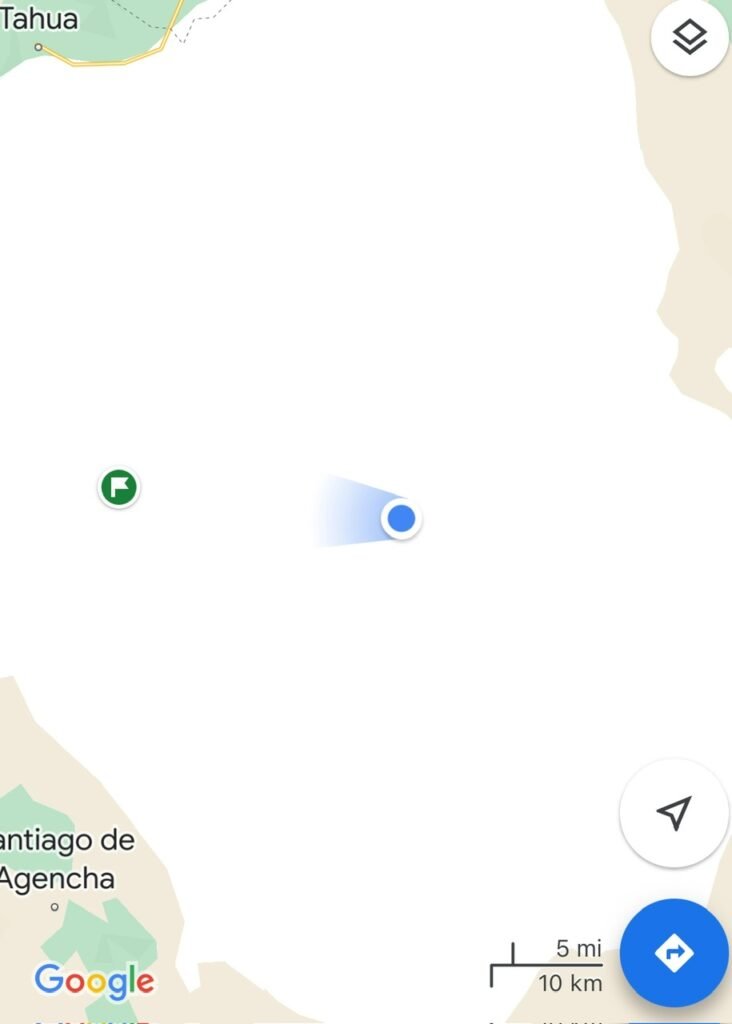
Another not-so-hidden secret about the Salar? It’s one of the biggest Lithium reserves in the world estimated to hold approximately 5.4 million tonnes. Lithium is used to make batteries for electric cars, so we’re hoping this increasingly valuable resource actually makes Bolivia richer unlike their experience with silver. Where we’re going, we don’t need roads!
Models by Day
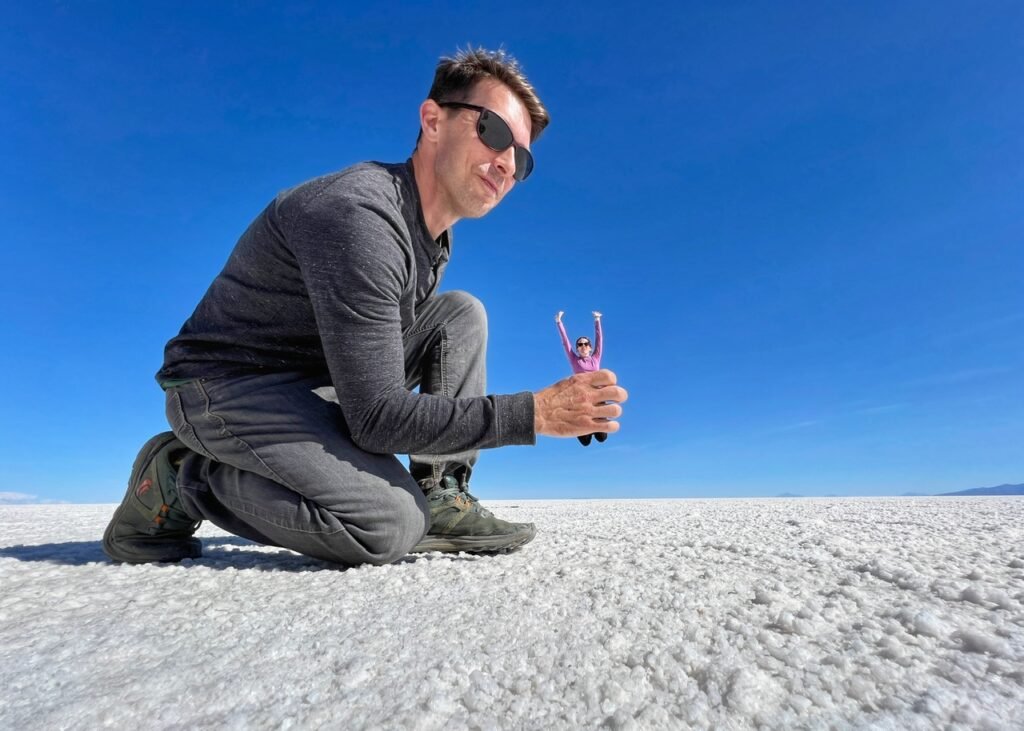
What no one typically tells you about your Salar de Uyuni adventure is that you’ll probably feel a lot like an actor or supermodel throughout the course of the tour. Like models, you’ll be taking direction and working in an intense environment with blazing sun, parched whipping winds, very frigid starry skies (night photo shoot to come) and also, may be asked to balance or leap in the air. In short, it’s an activity we’re happy to have done while we’re still young and agile, but was so much fun!!
That said, it’s also very important to have a guide who is a creative and accurate photographer! We were very happy with Marco, from Brisa Tours who truly went above and beyond throughout the course of the 12-hour day, which was a terrific value at $29/each, plus tip, and included lunch.


I promise she’s not kicking him to the curb! But she might be a control freak…


Greg fighting off T-Rex

In perfect balance
Bailamos!! Van Halen meets Pringles
Por favor! Don’t eat us!
Salar dance video!
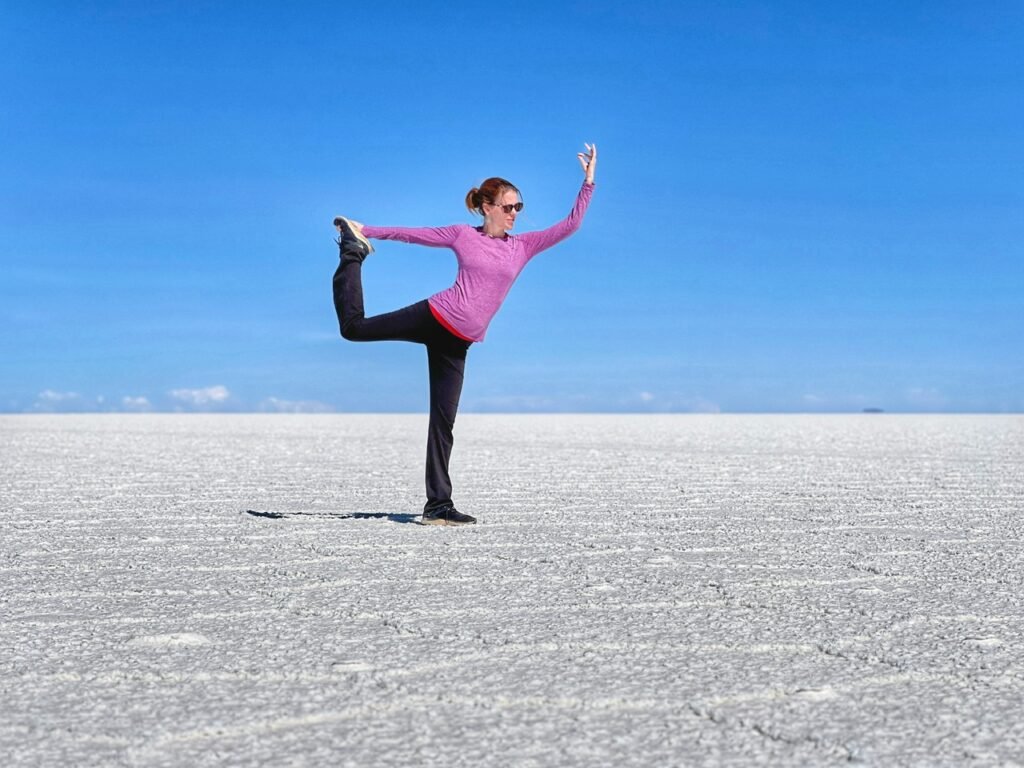

Yogi in action!
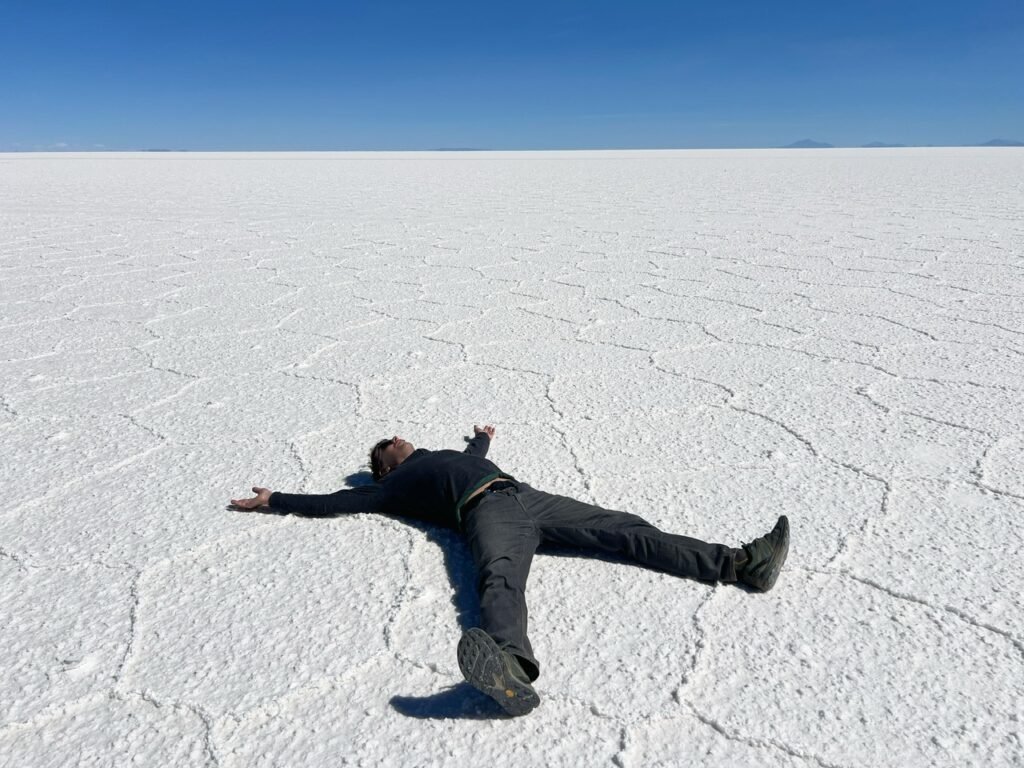
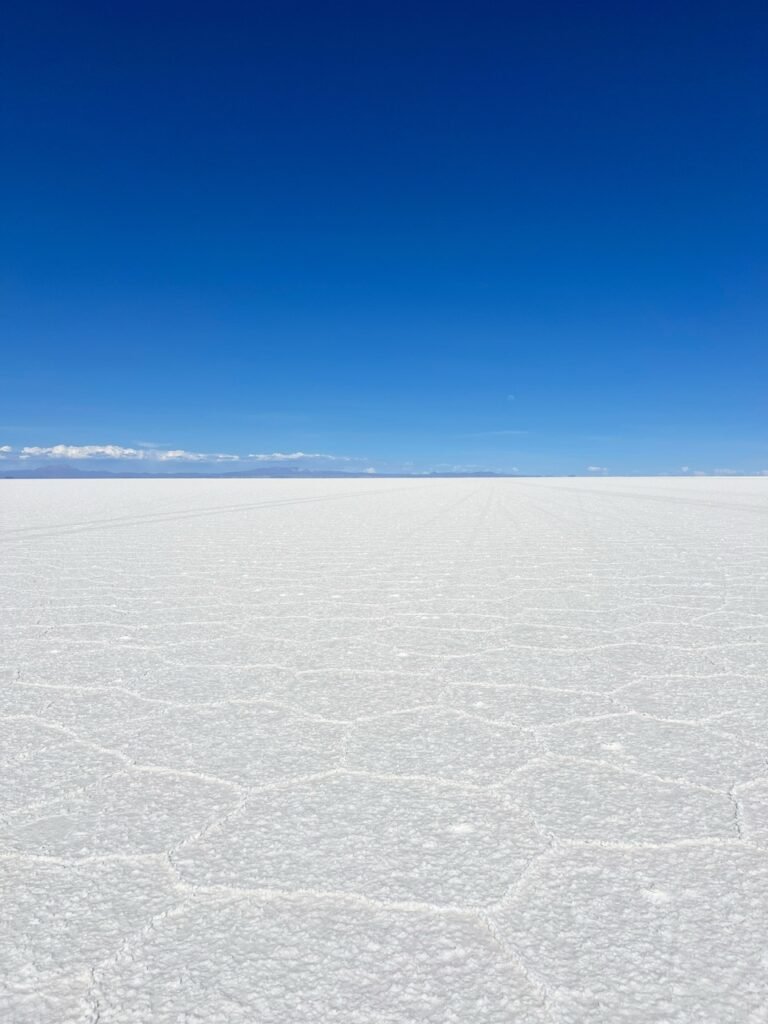
Greg trying out some salt angels. The peace of this place is just unbelievable.
Incahuasi Island
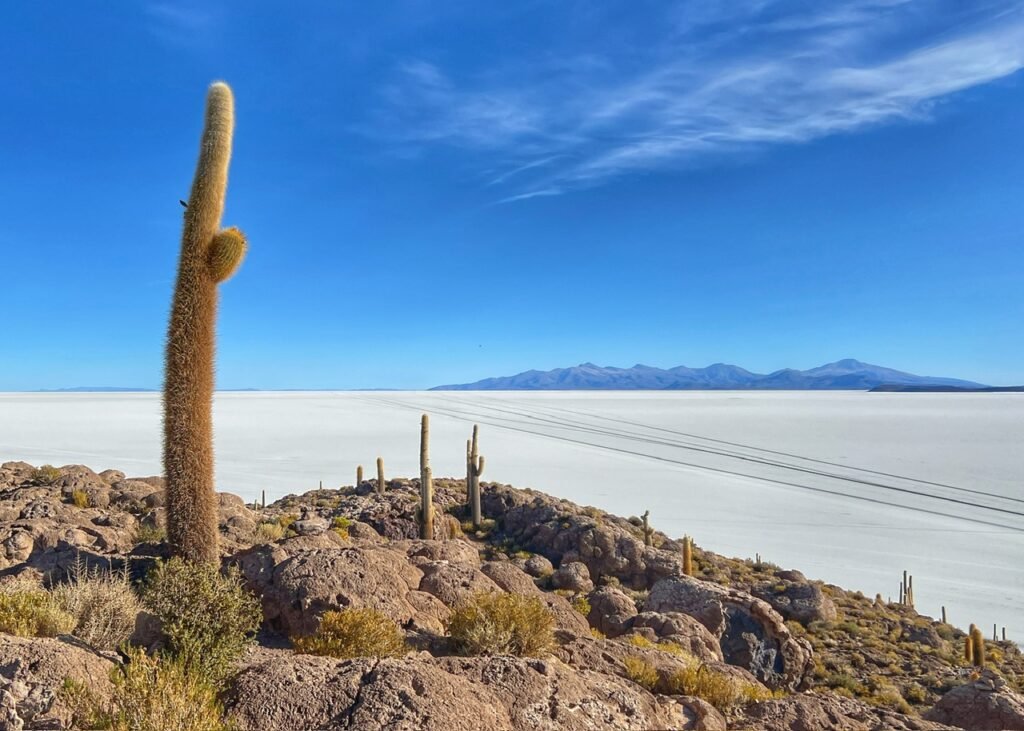
In the middle of the vast and uniform white expanse of Salar de Uyuni, one can find an anomaly in an ancient mound called Incahuasi Island. While it’s very likely dinosaurs once roamed this prehistoric lake and island, today its only inhabitants are the colossal cacti, some which reach more than 10 meters high (32 feet) and live more than 1200 years. It was our favorite stop on the Salar de Uyuni. The name comes from the Quechua language, the language of the Incas and means, “The house of the Incas.”
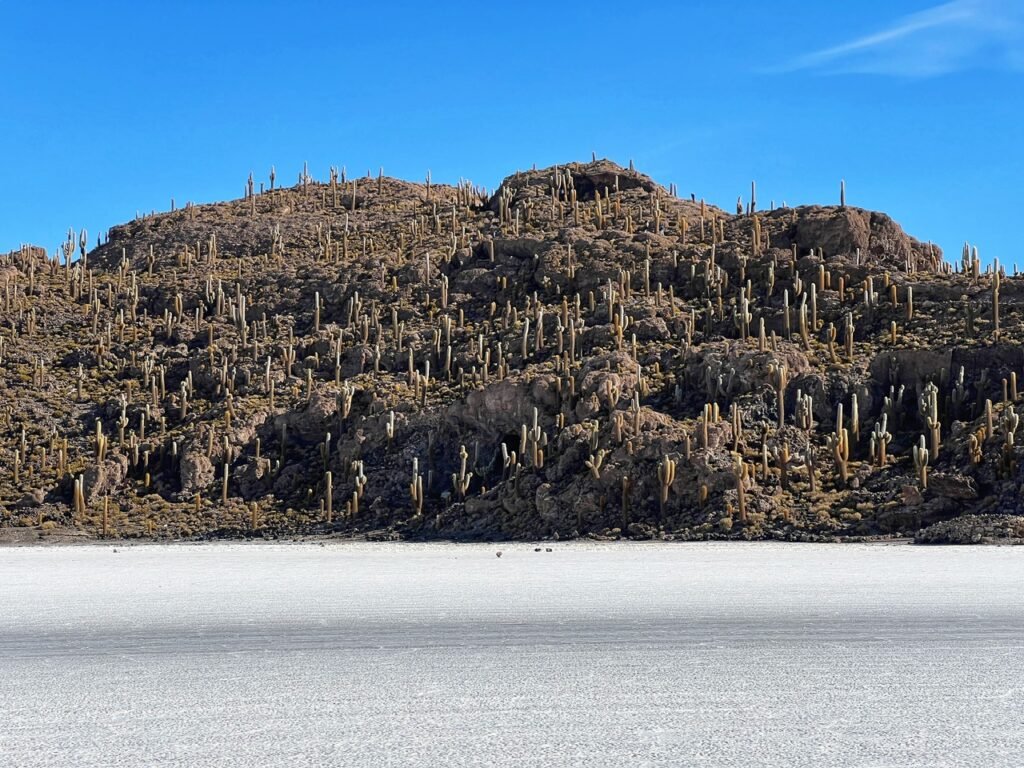
The contrast of the white salad with the rising island is really bizarre.


Travelers are invited to enter the island by paying 30 Bolivianos (~$4.10) and can then walk on the trail loop (about 45 minutes) which includes a nice ascension to the top for a really incredible view. The entire island covers 61 acres.
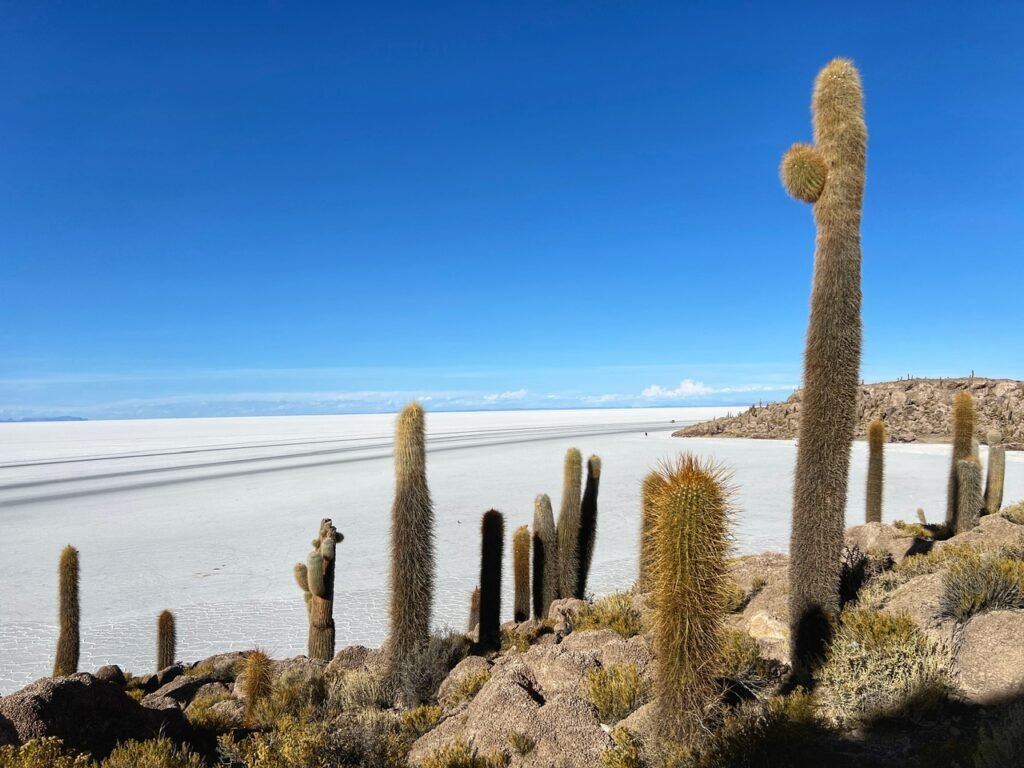
Throughout the hike, there are unusual and fragile coral-like structures and deposits that often consist of fossils and algae.

It’s really some of the most interesting scenery we’ve seen.


In the distance you can see a whole crew of camper and. Yes, this is definitely a thing on the salar. Can’t imagine experiencing it in this way!


Truly stunning. And some of the cacti look so soft you wanna pet them. (We didn’t!) 😂


We’ve only seen cacti this impressive once in our lives…at Joshua Tree in Southern California. We were sadly the only ones in our group who did the hike. They really missed out!

Being up there was definitely another world.

Natural arch
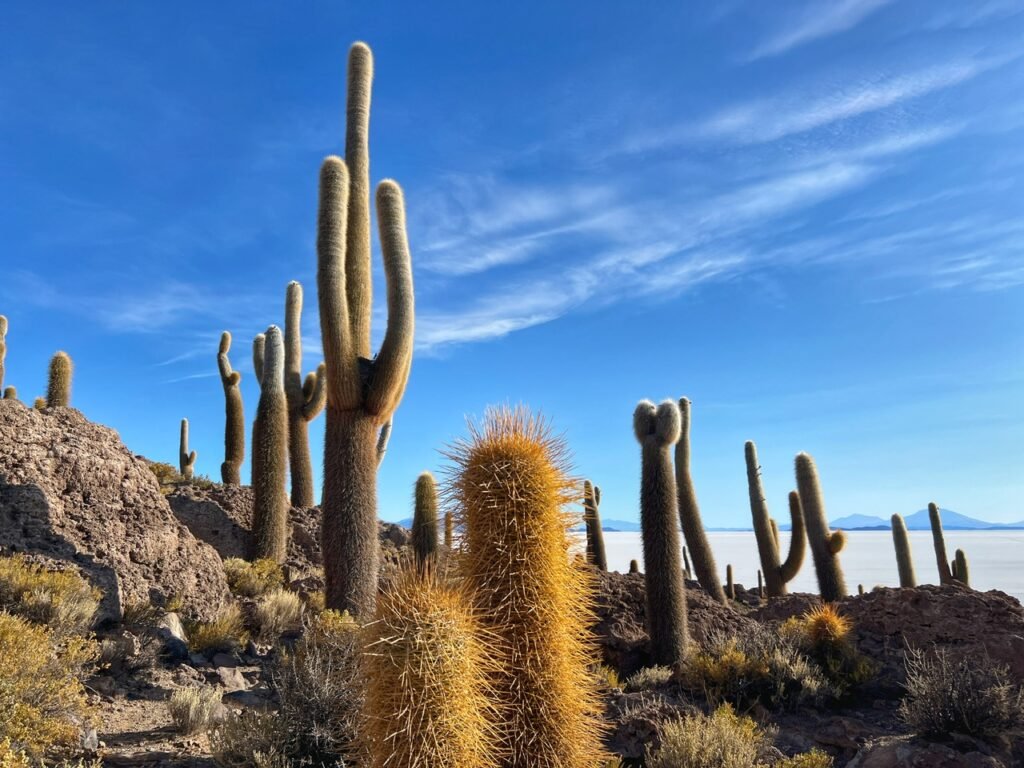
So grateful to have seen such beautiful nature!
Models by Night

After an action-packed day on the salar, Marco, our guide drove us to an area we definitely weren’t expecting during dry season…an area deluged with at least two inches of water creating the brilliant mirror effect that you normally only see in the rainy months. Here we got to experience a memorable evening photo shoot, one of the most beautiful sunsets we’ve ever seen, the lunar landscape emerging from its sheath, and the absolute chill enter our bones as the temperatures plummeted to around 4C (40F).
We couldn’t believe our guide’s creativity and commitment to impress us when the stars came out. He took this photo using twirling fire sabers (the same kind Freddy Krueger used in out Halloween post🤣) and lots of coaxing saying “No muevas! No muevas! No Muevas!” (Don’t move!) This was hard considering Mandy’s chattering teeth.

This one was taken using some sort of twirling light saber. It’s our first photo together that looks like a late 1980s elementary school flashback.


And this one under the stars was simply long exposure. We love how it made it seem like we were standing on the North Atlantic complete with floating ice. Had the moon not been out, the stars would have popped even brighter. Remarkably, Marco didn’t charge any extra for these photos although we gave him a big tip. Our friends on other tours didn’t receive the same over-the-top service. He certainly exceeded expectations!
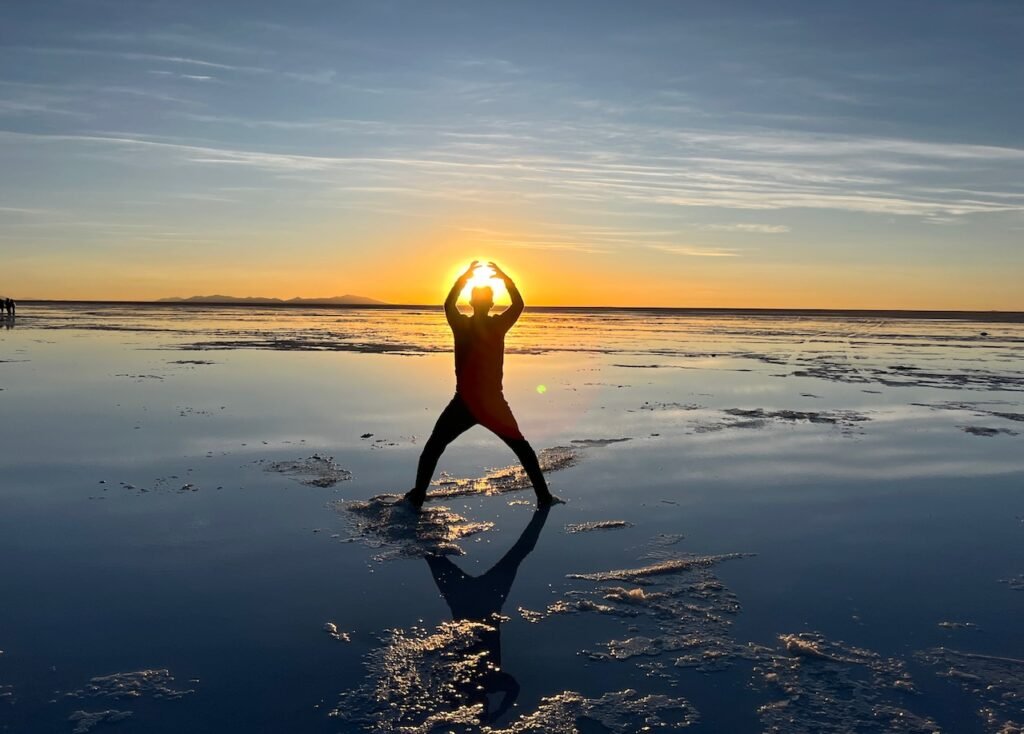
Greg holding the sinking sun (Mandy took this one. 🤣☀️)
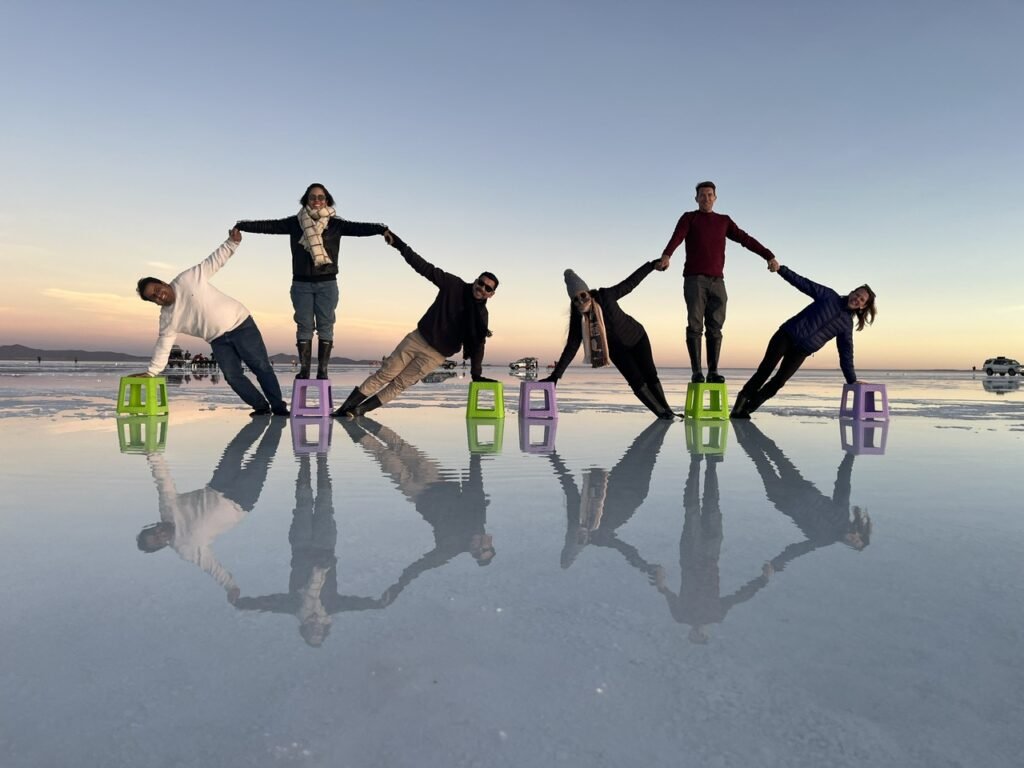
The wheel…with all six of us.
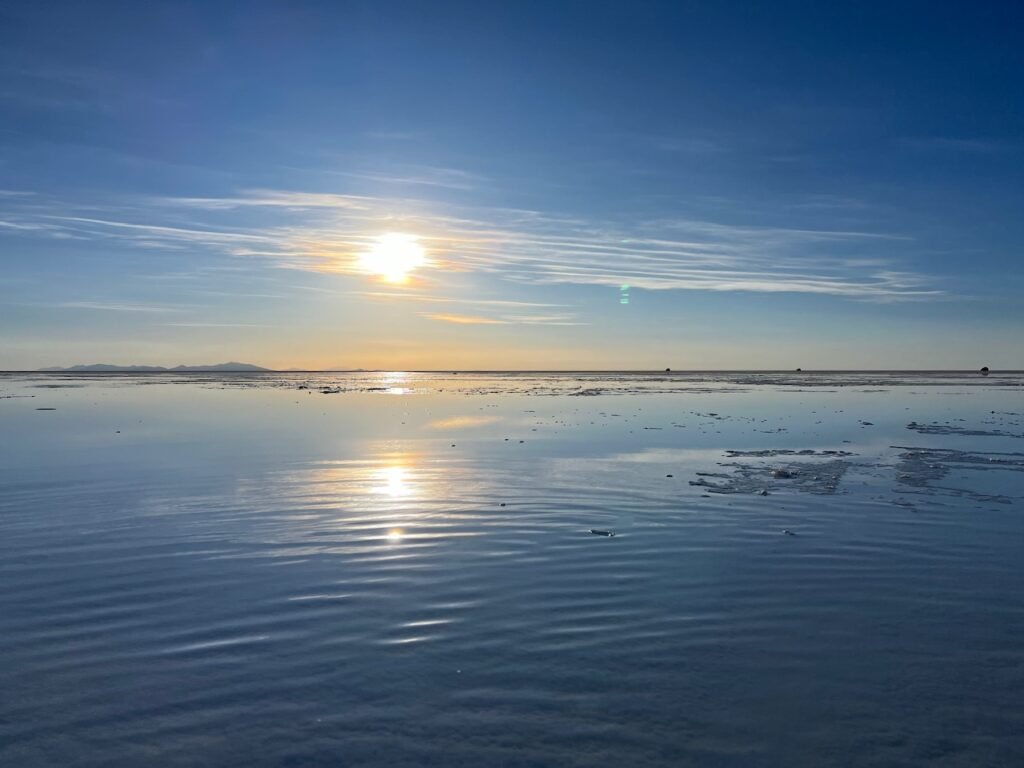
The sun begins to sink.
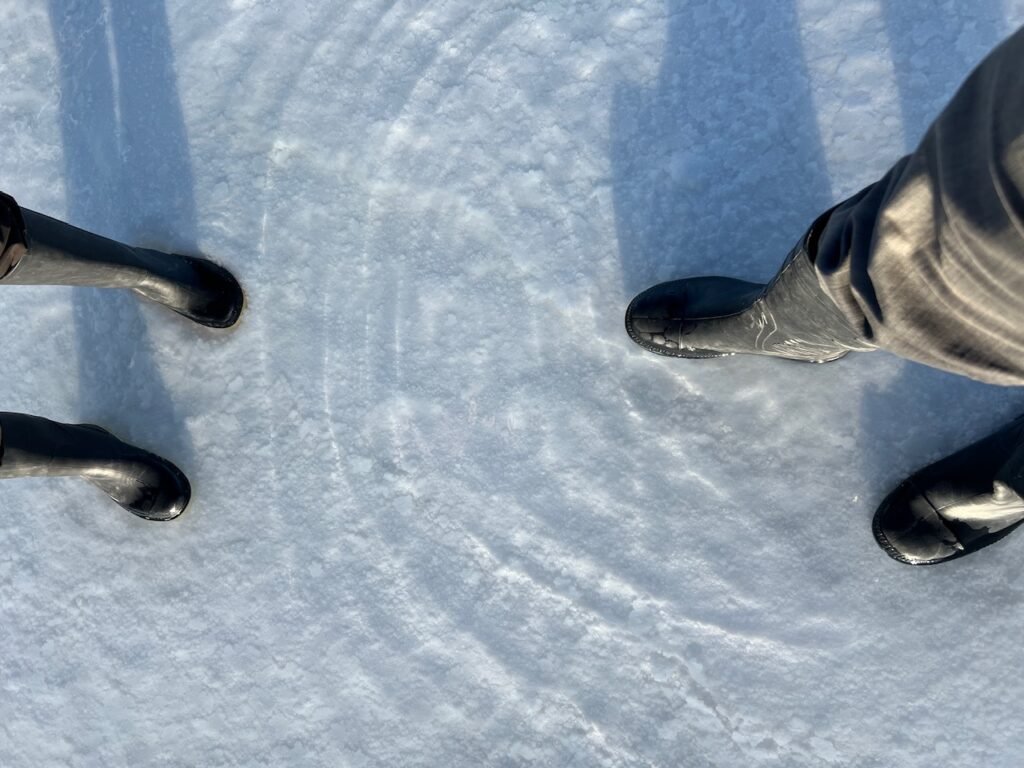
Fortunately our feet were protected with rubber boots, which were provided by Brisa Tours.
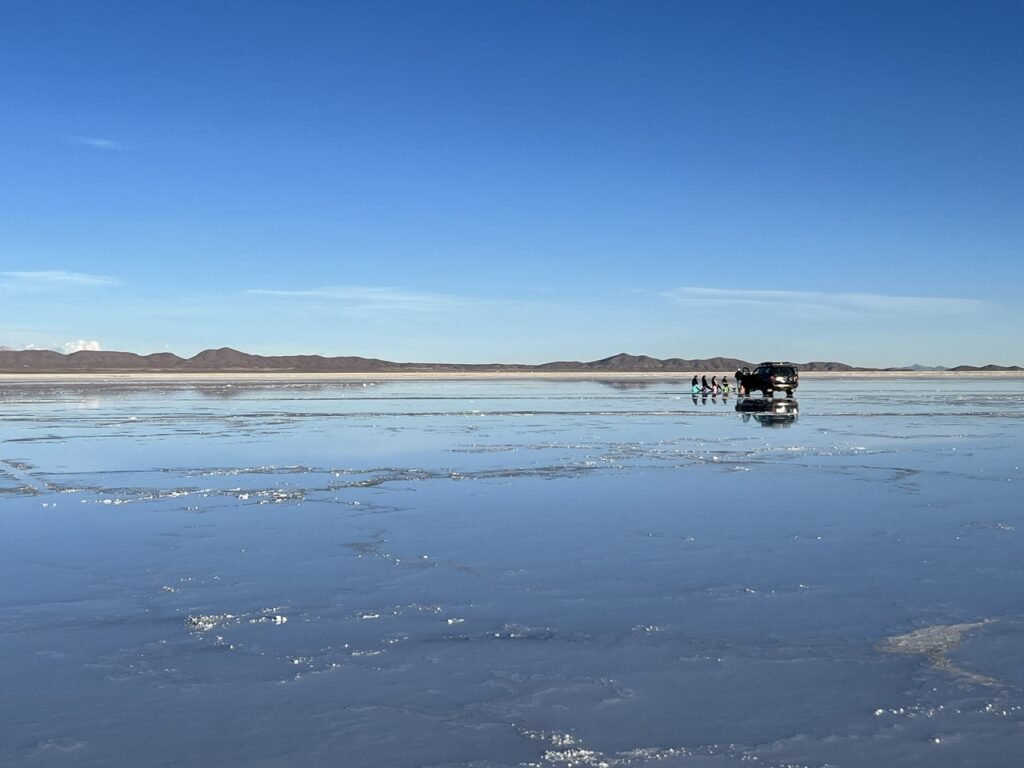
Only a few other trucks were in the same location as us. There were no others by the time the stars came out, which was eerie and wonderful at the same time.

Greg standing on the great mirror. In rainy season, Salar de Uyuni is said to be the biggest mirror in the world.
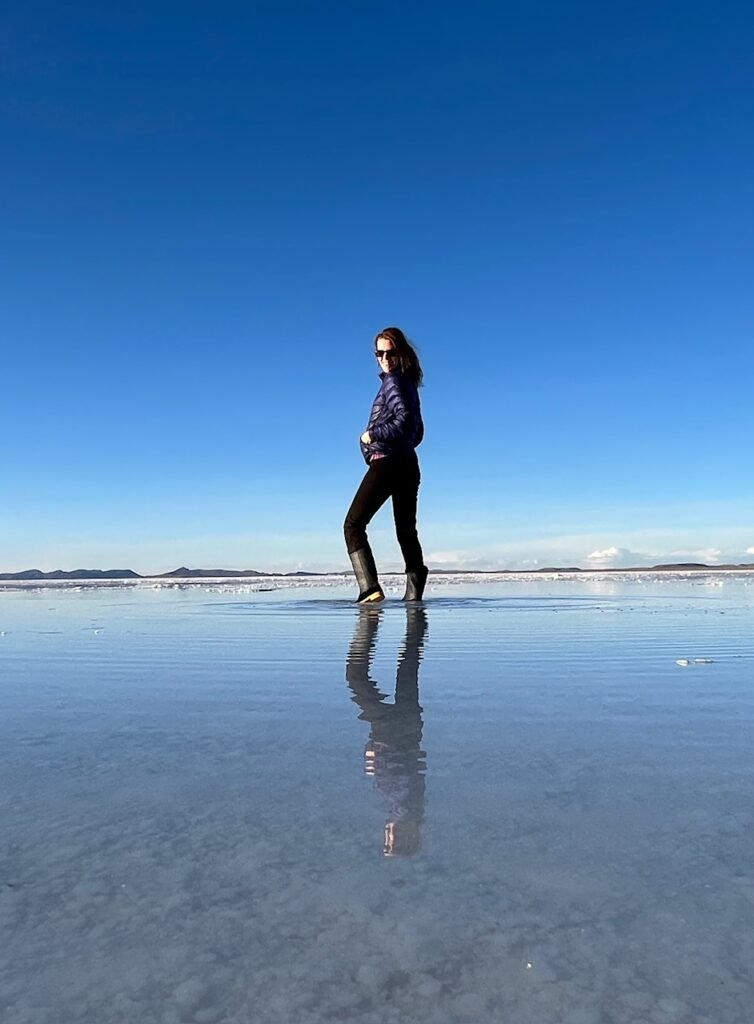
Mandy modeling the Uyuni rubber boot line.
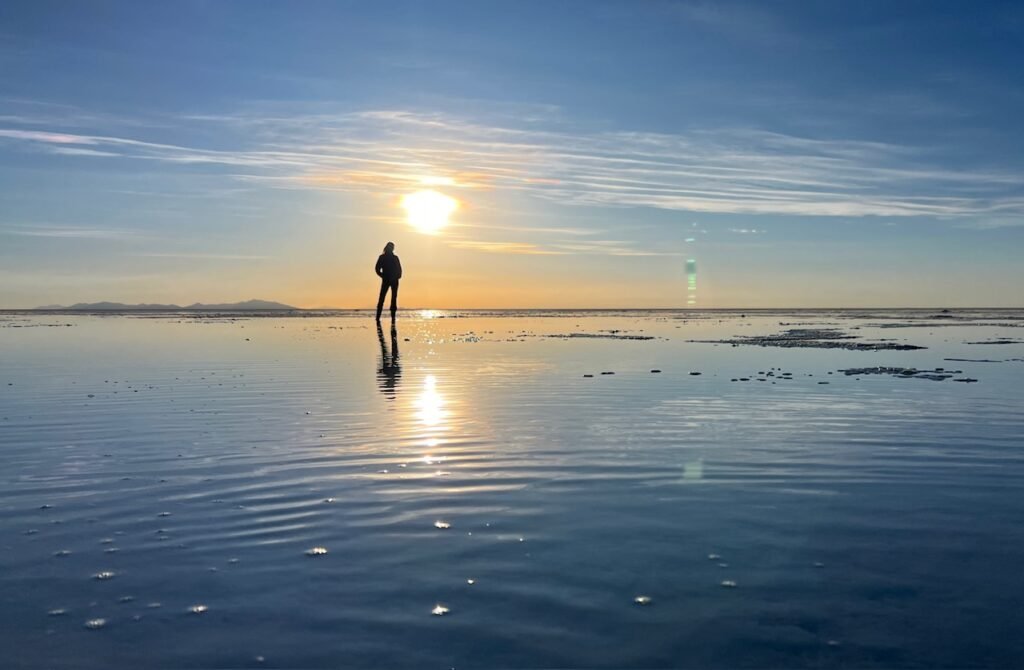
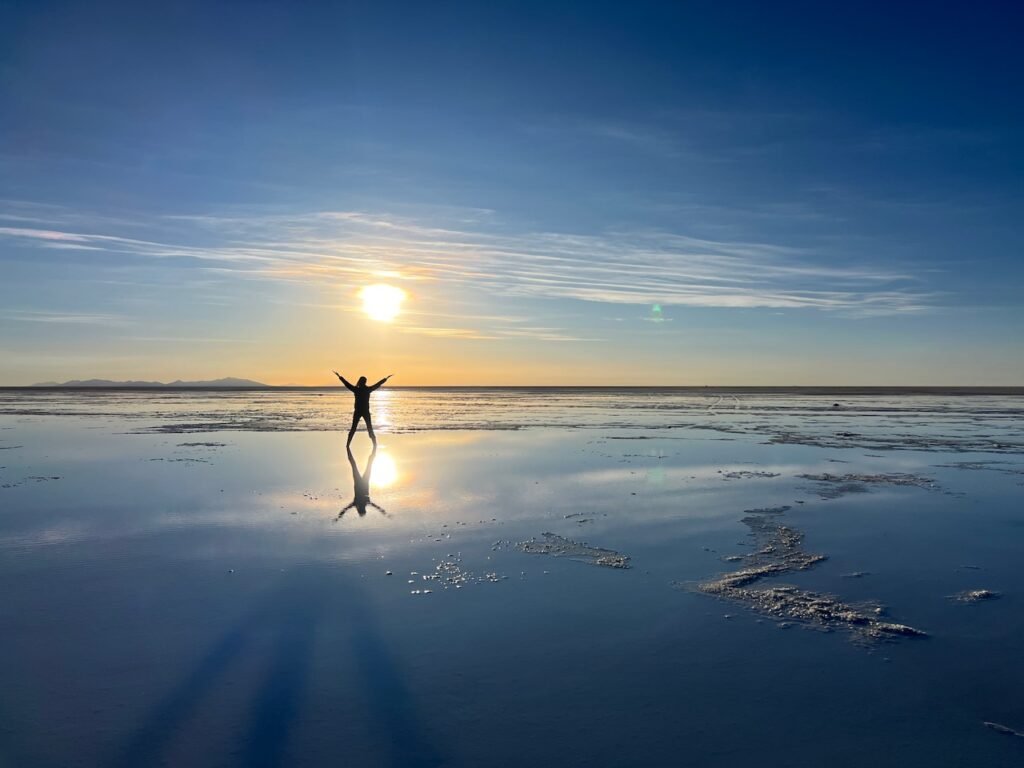

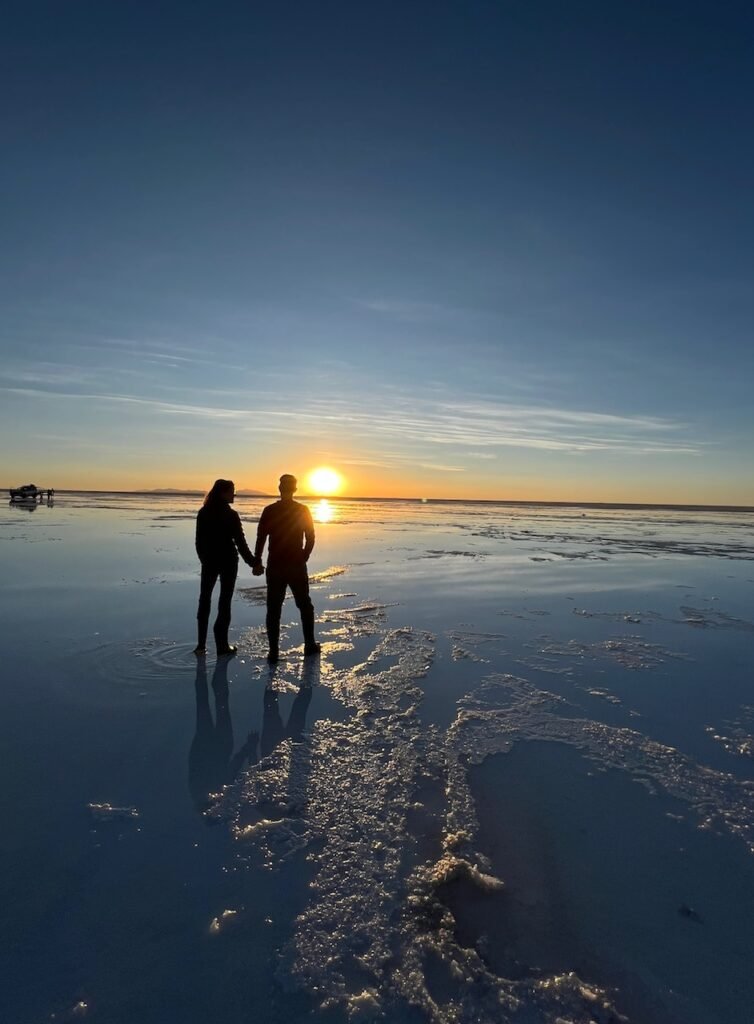
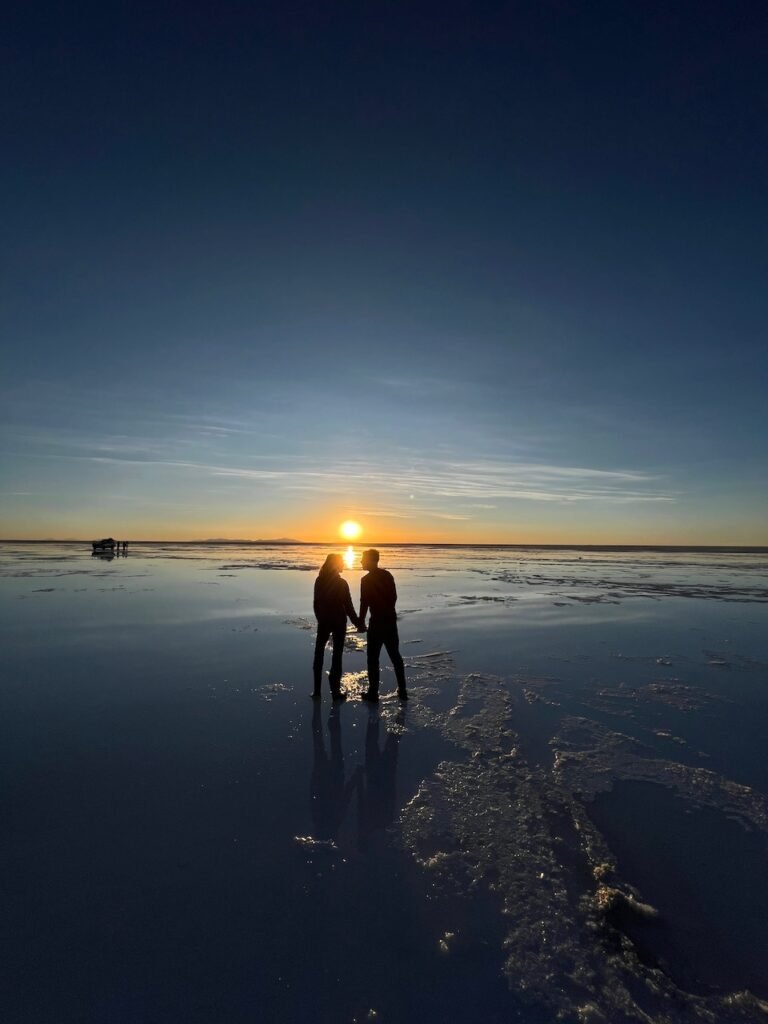
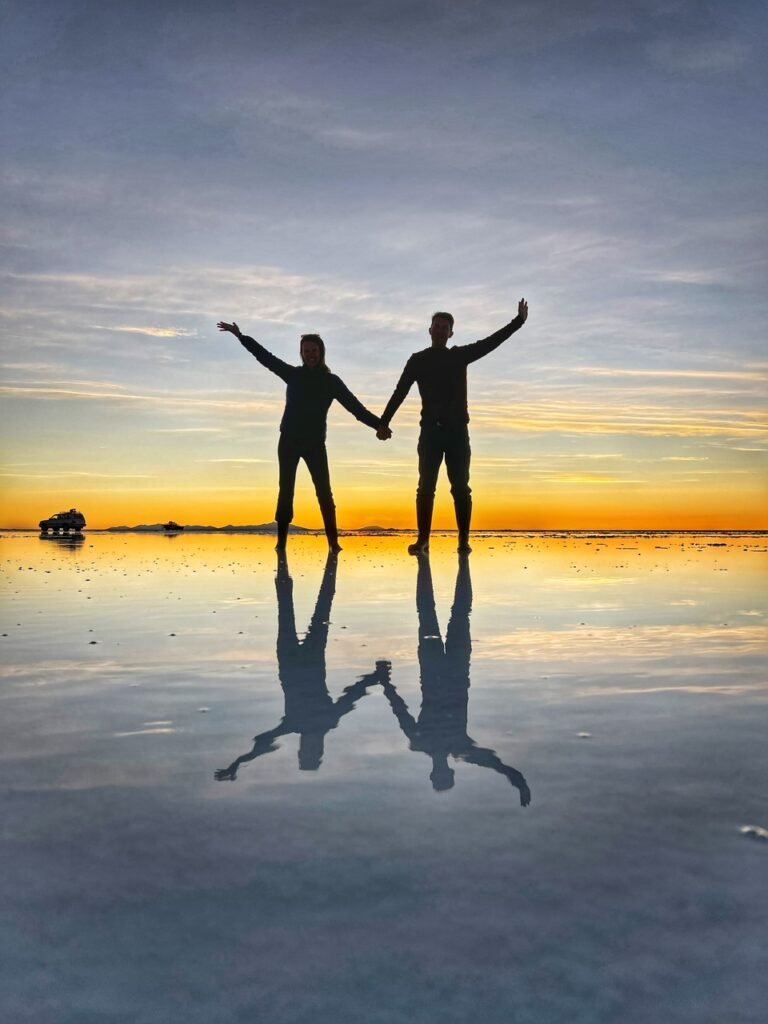
The silhouette shots…
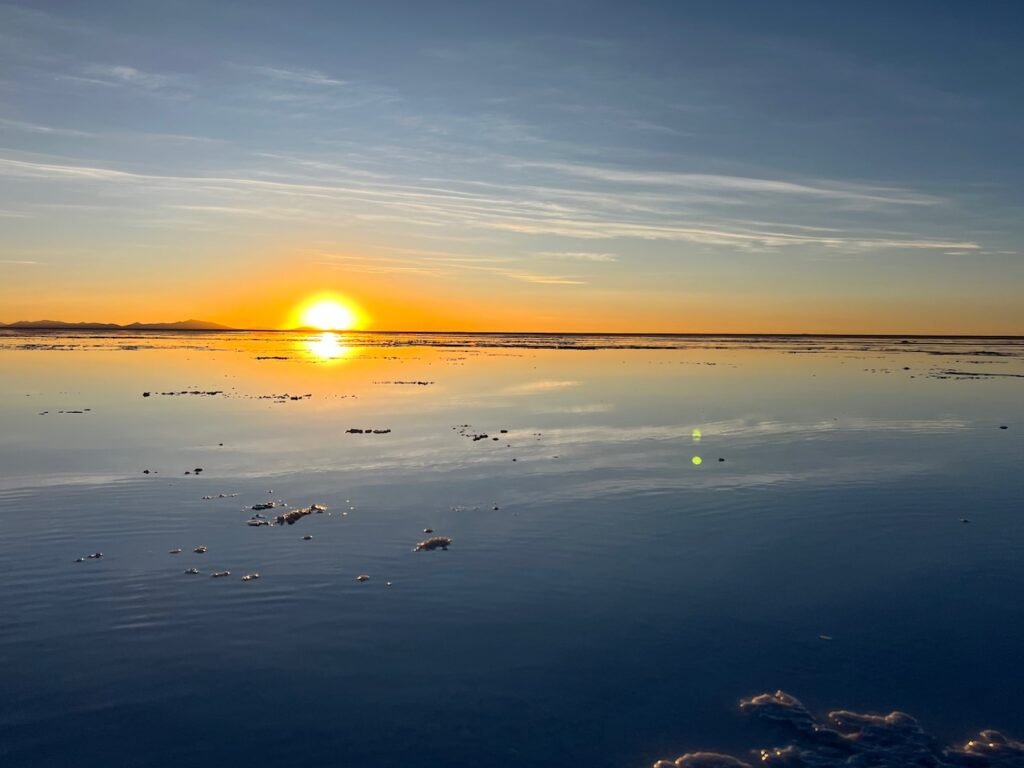
There she goes.




At this moment, Marco called his models back over for another shoot.
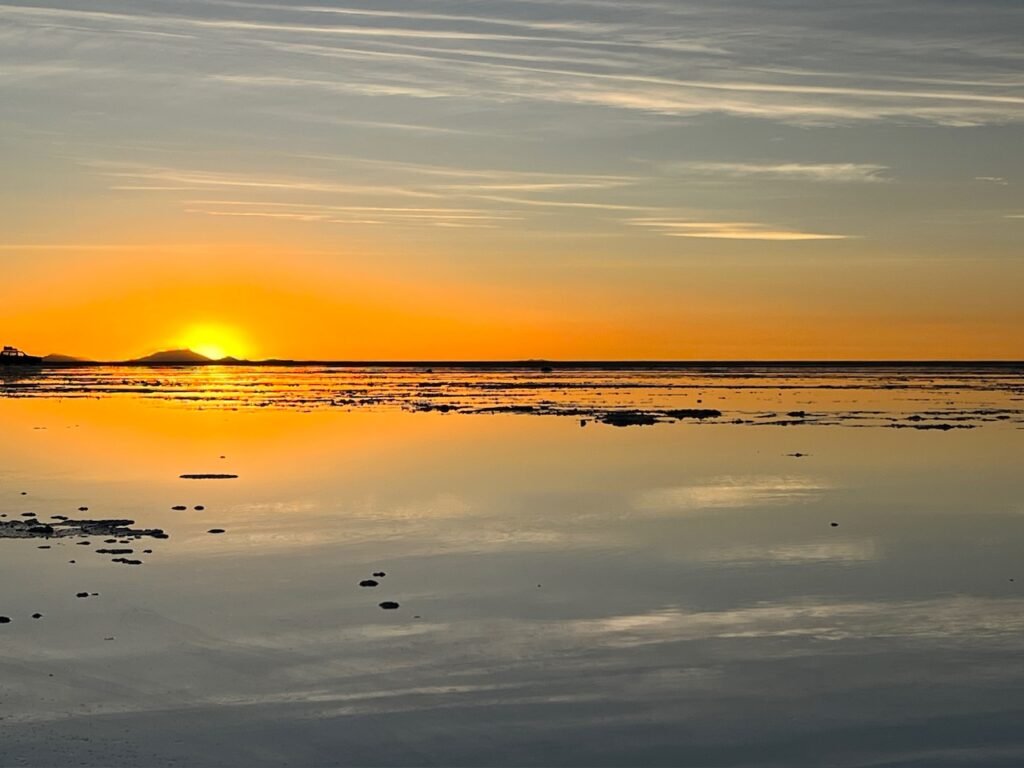

Truly indescribable.

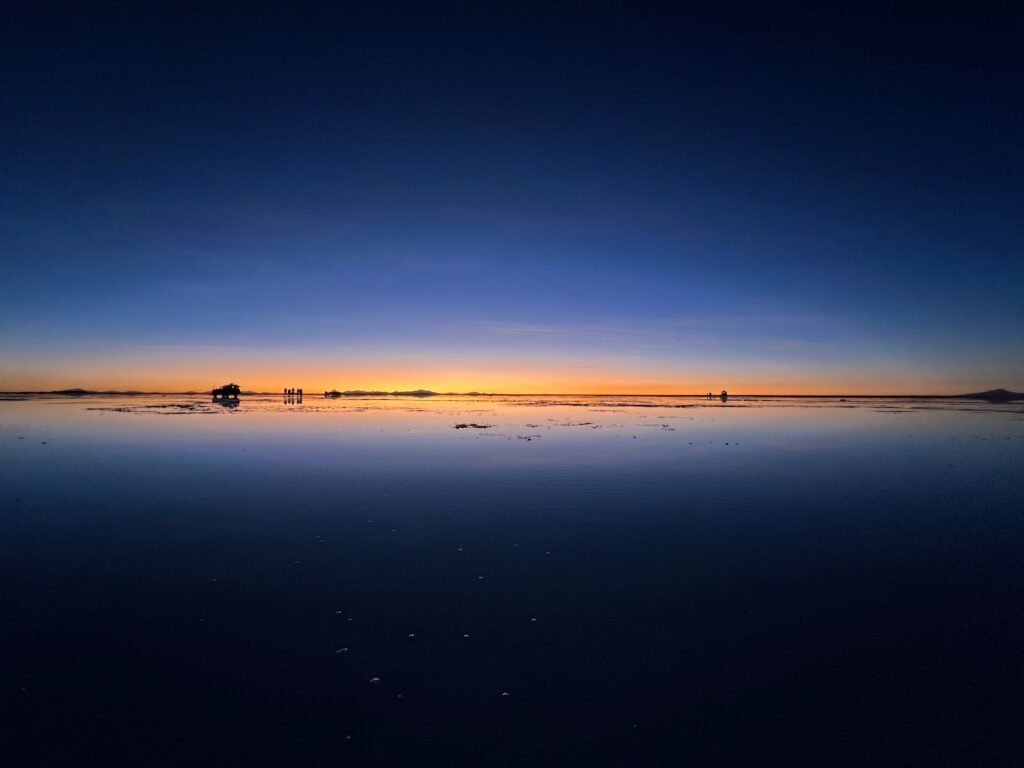
And so very cold!!🥶 This truly should be on everyone’s list. It’s insanely beautiful.

